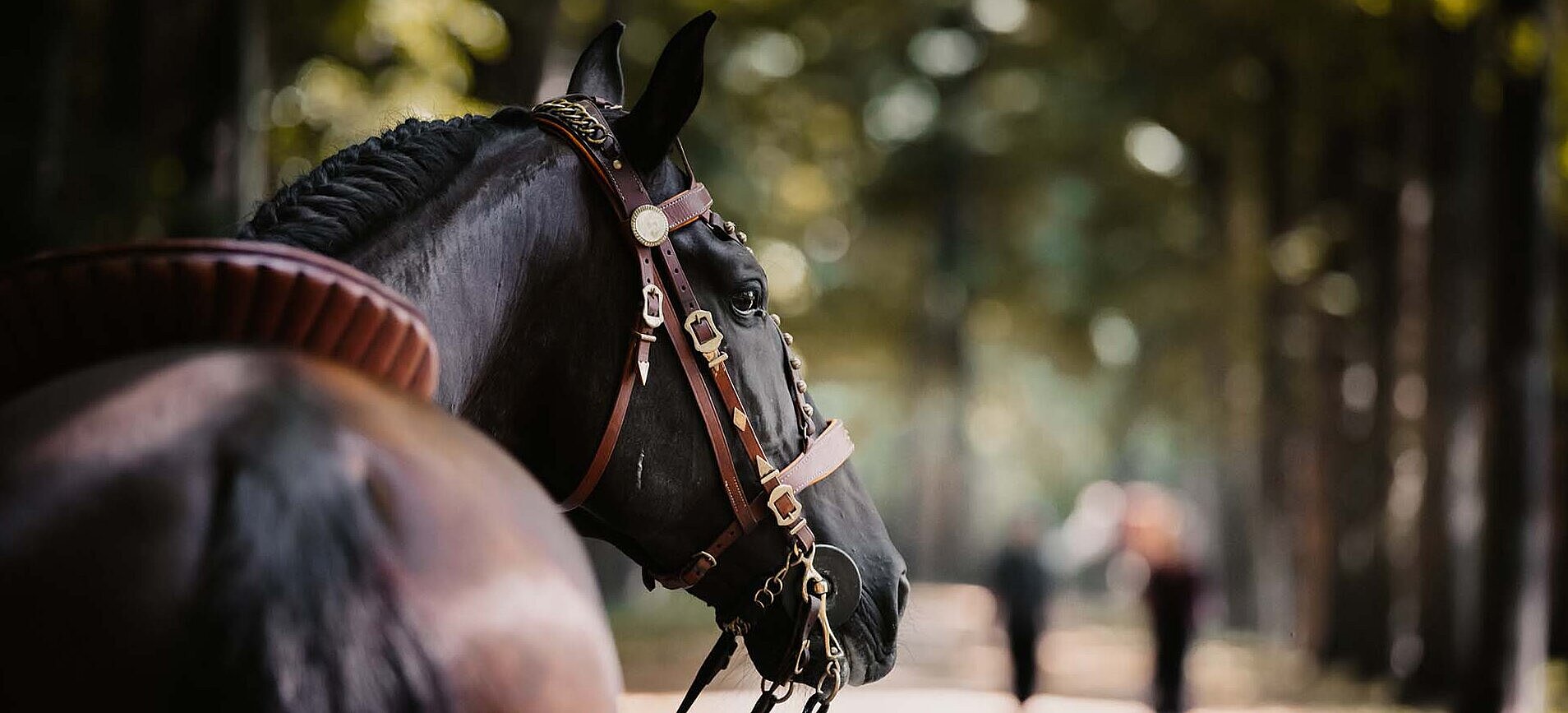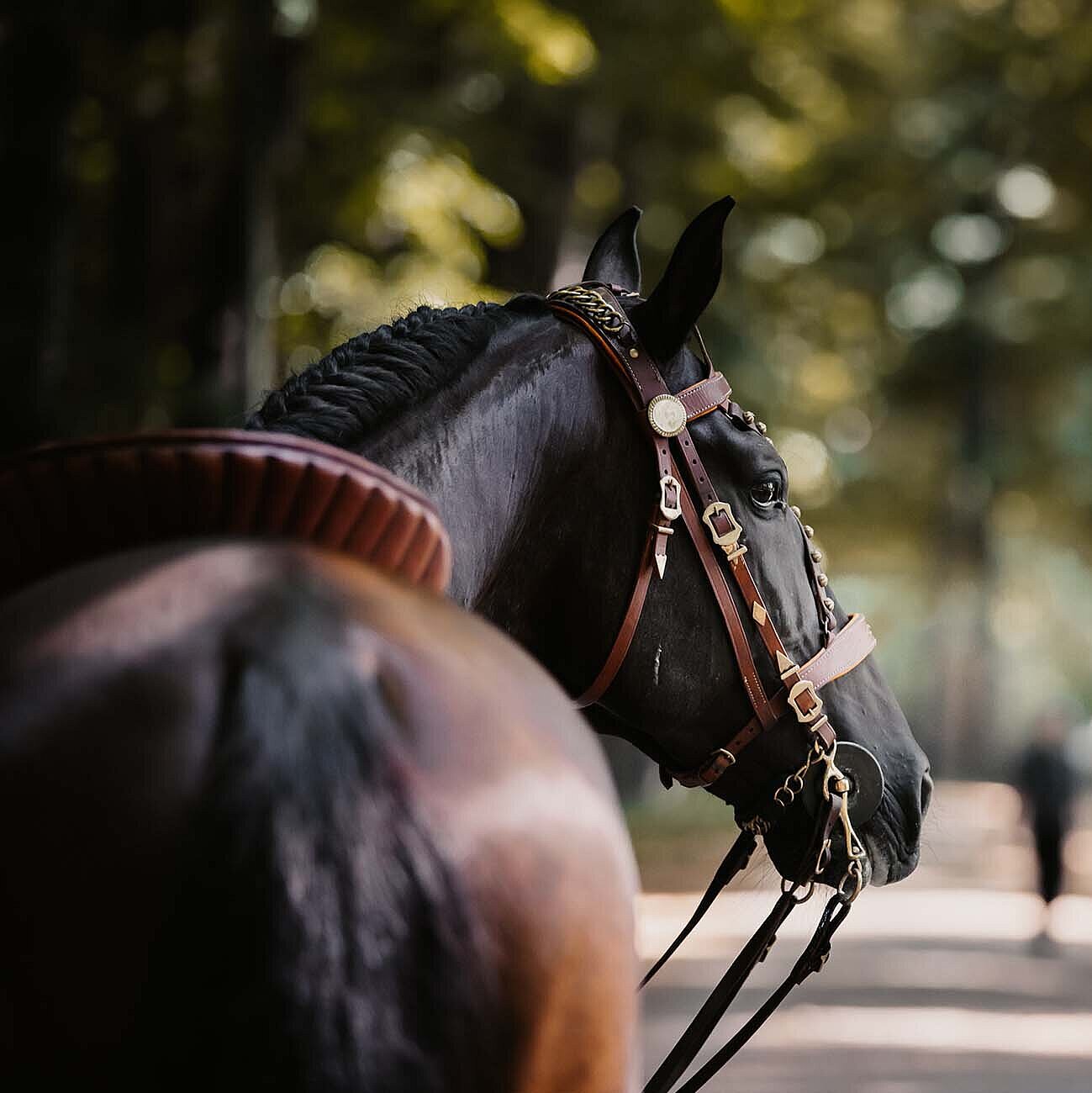Spanish saddles
Spanish saddles belong to the family of working saddles. This type of riding saddle, which also includes the Western saddle, the Camargue saddle and the Portuguese saddle, developed due to the demands of mounted cattle herders in agriculture. Parallel to the traditional saddle of the Spanish vaqueros, the Spanish school saddle developed in the Spanish riding school.
But what are the characteristics and appearance of these Spanish saddles? How is a Spanish saddle constructed and what are the differences?
Vaquero saddles
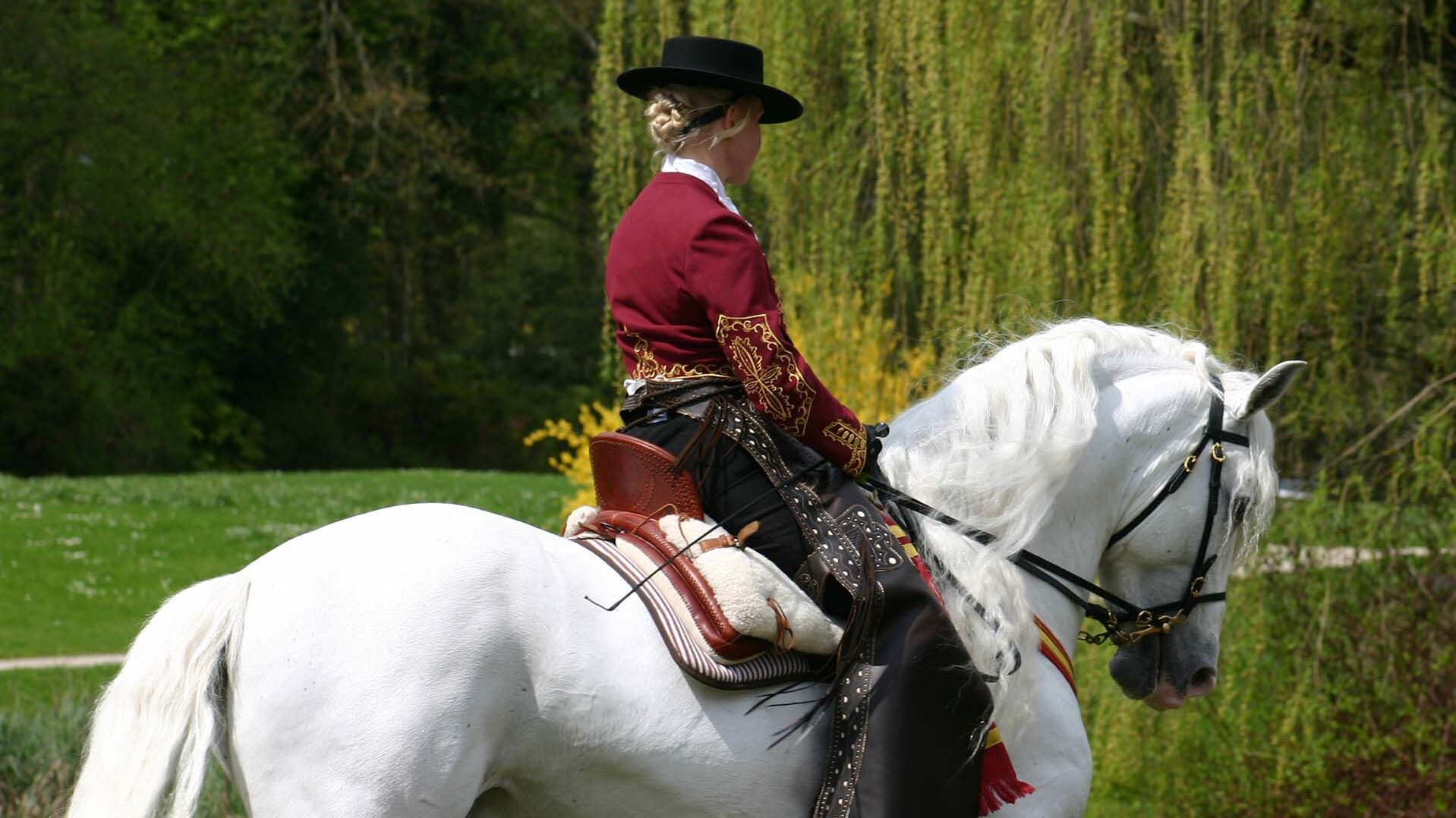
The traditional Spanish saddle of the vaqueros is also known as the vaquero saddle or vaquera saddle. This saddle can be recognised by its short, straight saddle flap and the high concha at the back. The seat area is traditionally covered with lambskin or leather in brown or black. The rider can choose between the Mixta model with a front gallery or the Vaquero saddle without a gallery.
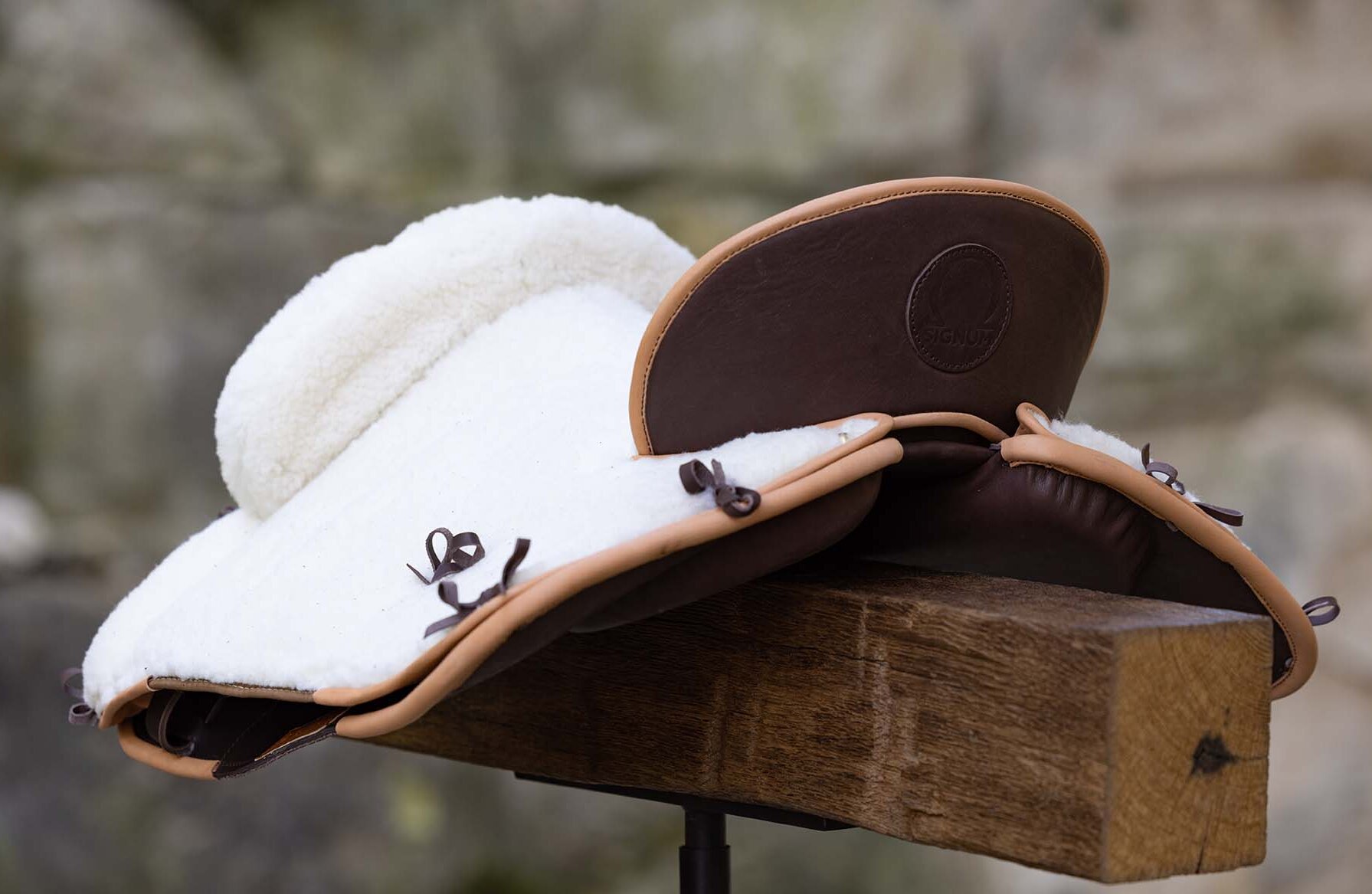
Characteristic accessories are the large box stirrups, the Manta Estribera cloth in front of the saddle and the saddle pad in the Spanish national colours of red and yellow. This saddle is still used today in the Doma Vaquera and by Spanish Working Equitation riders, but is also becoming increasingly popular with leisure riders thanks to its comfortable fit for horse and rider.
Spanish school saddle
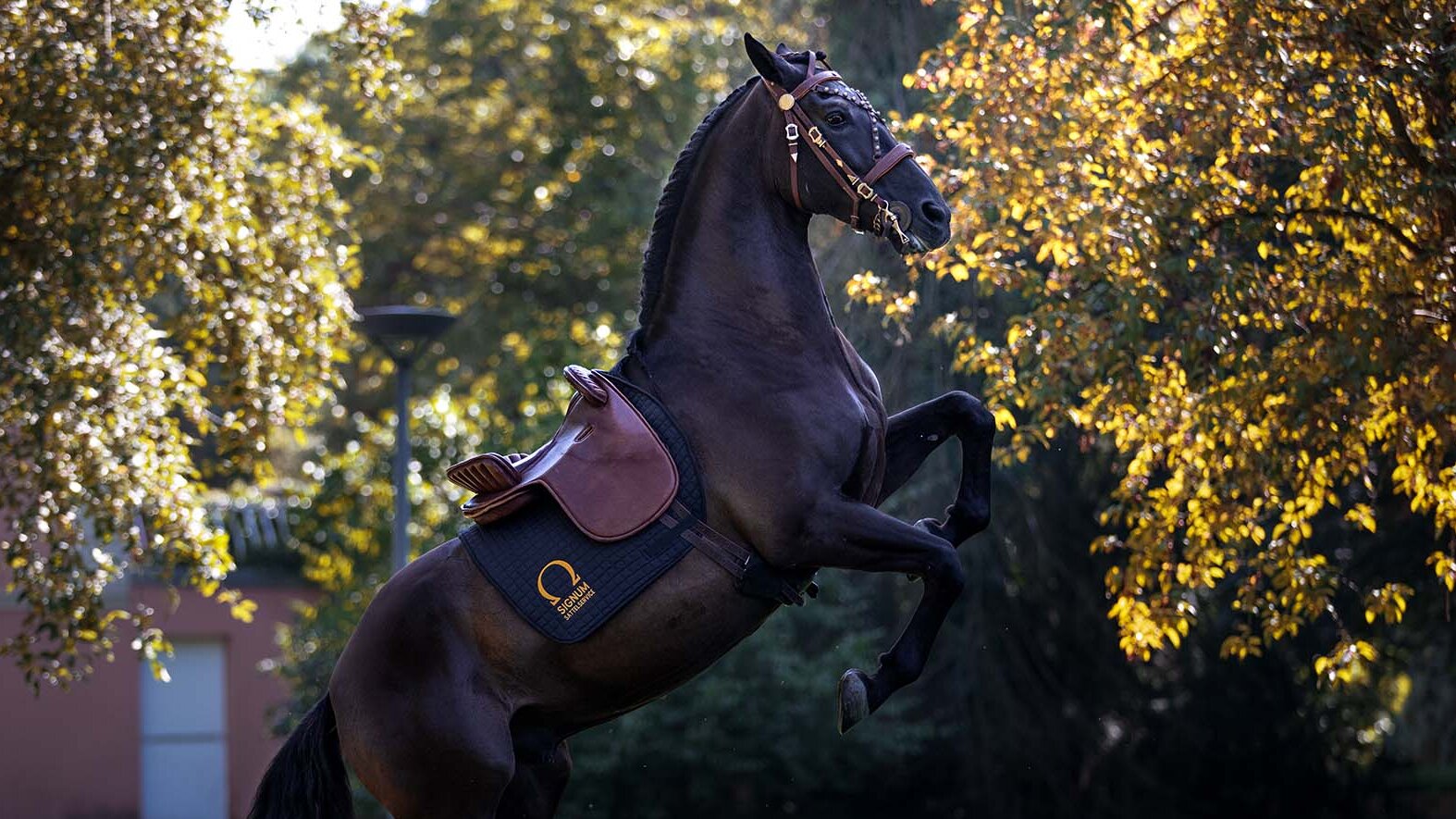
The characteristic baroque saddle from the Spanish Riding School was specially developed for the Alta Escuela, in which the horse performs the most difficult dressage movements and lessons above the ground in the highest level of collection. This art of riding has its origins in the Baroque era and consciously utilises the natural imposing and fighting behaviour of the Spanish stallion and trains it to perfection.
The Spanish schooling saddle has a rather flat seat, sometimes a flat knee roll, a high concha at the rear and a gallery at the front. All this together with the rider provides good support, especially when jumping over the ground. This saddle is still used today in the Spanish Riding School and by enthusiasts of the Alta Escuela.
What is an Iberian saddle?
In addition to the Spanish vaquero and school saddles, Portuguese saddles naturally also belong to the family of Iberian saddles. Its origins also lie in the work riding of mounted cattle herders and mounted bullfighting. The best-known saddle model is the Portugesa baroque saddle with its high galleries. Its striking galleries are often even more pronounced than those of its brother, the Spanish school saddle. The large rear gallery extends down to the rider's thigh, ensuring a secure hold even during dynamic manoeuvres. The elegant design with decorative stitching makes it a classic baroque saddle.
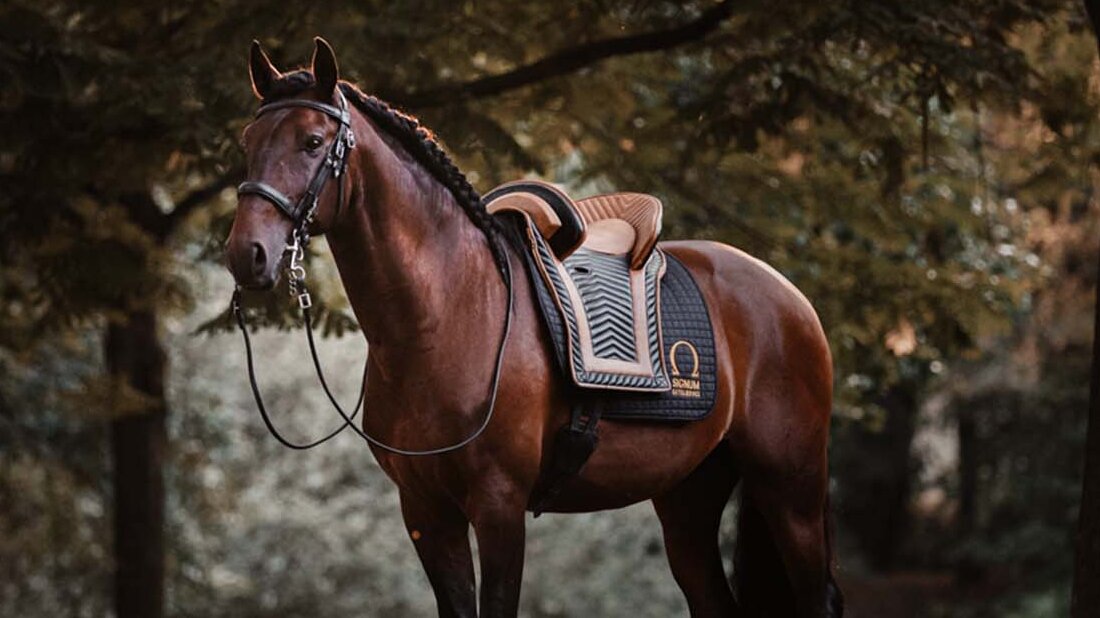
Nowadays, many English saddles or dressage saddles with a somewhat more playful look are advertised as Iberian or Spanish saddles. However, these are not really saddles modelled on Spanish or Portuguese saddles.
Advantages of Spanish and Iberian saddles
Due to their origins in the working riding style , Spanish saddles or Iberian sad dles generally have a large contact surface, which allows pressure to be distributed gently on the horse's back on long rides. The vaquero saddle in particular offers the rider a unique seating experience with its soft lambskin in the seat area, the front gallery and the high concha.
The rider sits framed and can relax in the soft, deep seat and feel the direct contact with his horse. This makes a Spanish saddle suitable for gymnastics and the basics of dressage as well as for long cross-country rides.
Spanish saddle experience
We at SIGNUM started out almost 20 years ago as importers and saddlers for Spanish saddles. However, our experience quickly taught us that many Spanish saddles can only be customised to a limited extent and no longer meet today's standards. Unfortunately, this is still the experience of many people who bring back an original Spanish saddle from their holiday and find in despair that it cannot be fitted to their horse.
Due to the many shortcomings in terms of fit, we developed our first own Spanish saddle model 15 years ago - the Campo Flex. A vaquero saddle with the characteristic large contact area in three seat sizes, which had a flexible interior, an adjustable gullet plate and an adjustable rib cage, but was otherwise indistinguishable from a traditional vaquera saddle. This model has since been replaced by our OMEGA Vaquero .
OMEGA Vaquero saddle
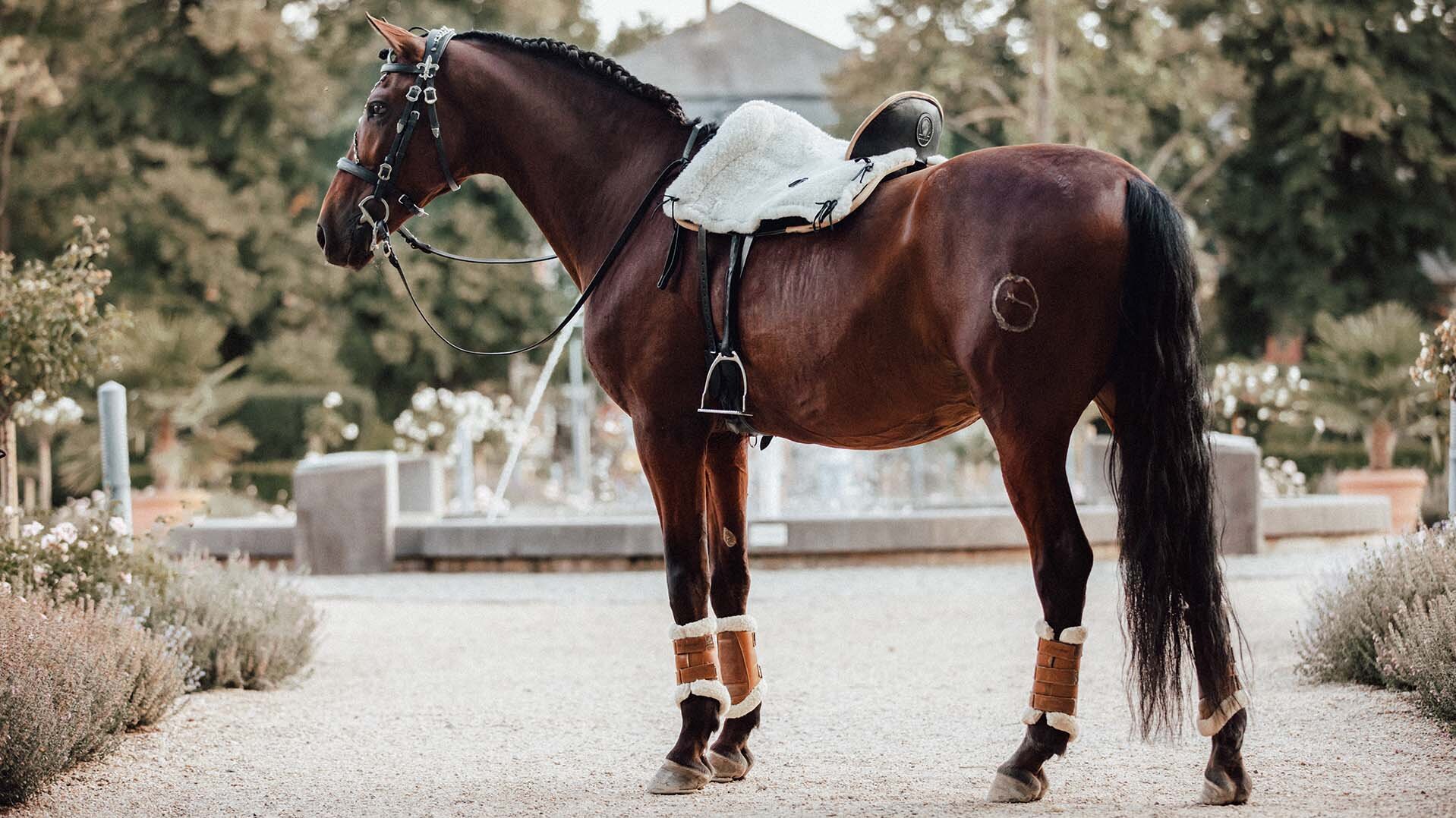
Compared to its predecessor, the Campo Flex, the OMEGA Vaquero weighs only around 8kg instead of 14kg. It is also available as a customised saddle in any seat size and is equipped with an individual saddle tree, individual saddle panels, plenty of shoulder and spinal freedom and, of course, our adjustable gullet plate and rib cage. This adaptability to the horse enables us to achieve an optimum fit and extensive modification options over time. Of course, we have the right accessories: from the customised MATTES saddlecloth or saddle pad for Spanish saddles, a matching leather girth, stirrups and much more.
Which Spanish saddle for my horse?
It is often assumed that an Iberian saddle is automatically the right saddle for an Iberian horse such as an Andalusian, a Spanish, a PRE or a Lusitano. However, Iberian saddles do not automatically fit all Iberian horses. Iberian horse breeds often have a short back and broad shoulders. The large contact surface of a Spanish saddle is well suited to distributing the pressure over the available saddle area in a way that is gentle on the back. But that's not all, when choosing the right saddle, make sure that it is specially adapted for the horse and also suits your riding goals as a rider.
But who is a Spanish or Iberian sad dle particularly suitable for? An Iberian saddle such as the Spanish school saddle is suitable for a rider who is modelled on the horsemanship of the Vienna Riding School, the Escuela and the high school with its jumps above the ground.
Would you like a particularly comfortable saddle for horse and rider? Then the Vaquero saddle could be the right model for you. The large contact surface offers the horse a particularly comfortable feeling. The soft and comfortable seat with lambskin cover makes you as a rider feel like you are sitting on clouds - ideal for long, relaxed rides in the countryside or trail rides.
Do you want to ride classical dressage or even jump? Then we recommend that you look for a saddle model that has been specially developed for these disciplines and can be fully customised to your horse.
Where can I buy a Spanish saddle?
We strongly recommend that you do not buy Spanish saddles as holiday souvenirs in Spain. If you want to buy a Spanish saddle, whether new or second-hand, contact a saddler with experience in selling Spanish saddles. Ideally, you can test a Spanish saddle on your own horse during a saddle fitting. During a saddle fitting, you as a rider can try out the feel of a Spanish saddle and observe your horse's reactions. When buying, make sure that the saddle has good adjustment options so that it can be changed as often as you like over time and adapted to your horse.
Would you like to try out our Spanish vaquero saddle without obligation? Then register here. Registration for saddle fitting
